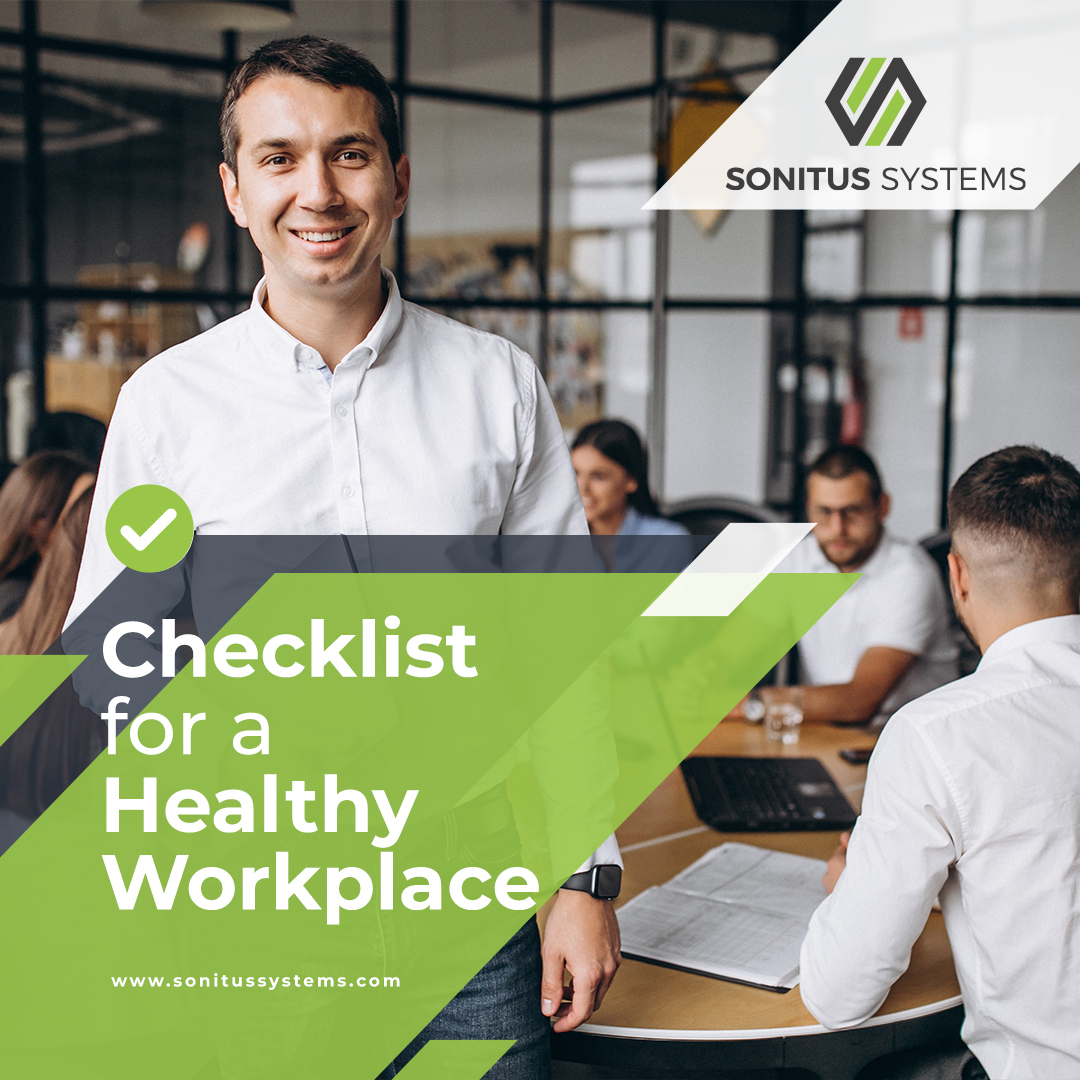While we may all be getting used to the idea of green buildings that help tackle climate change, another key factor in creating sustainable environments is to look at the human side of things. Healthy workplaces and spaces are environments that are conducive to human well-being, prioritising the health and growth of the inhabitants therein. Healthy workplaces are good for the bottom-line too. A recent World Green Building Council report has shown that the majority of businesses report measurably better engagement by employees as a result of implementing healthy workspaces, meaning improved productivity (https://www.sonitussystems.com/insights/the-role-of-healthy-buildings-in-boosting-productivity/) and satisfaction amongst workers.
Air quality and ventilation
One of the most important factors to consider is the air quality provided to workers. As it stands, most workplaces in Ireland and elsewhere tend to feature relatively poor indoor air quality. The gases and particulate matter (pm) within our buildings are known to cause health issues such as COPD, asthma, and other breathing-related problems. Concentrations of ozone and volatile organic compounds within our workspaces from daily activities and even furniture are also known to cause other problems such as irregular heartbeats and irritation to our skin and eyes.
While scientists are still drawing up a list of all the known causes of these indoor pollutants, most workplaces can improve the air quality therein through improved ventilation. Studies now show that tightly sealed buildings without access to fresh air can negatively affect our focus as well as our health. Fresh air helps dilute carbon dioxide and other pollutants that occupants generate through breathing and their activities, improving the well-being of everyone. Poor ventilation is known to cause fatigue, shortness of breath, dizziness, and congestion, with a growing body of research now showing fresh air circulated around a building can help improve air quality for workers, improving performance and their wellbeing.
Improving ventilation without introducing harmful particulate matter will involve maintenance of adequate HVAC systems, ensuring they function correctly and are serviced regularly.
Decrease noise and improve lighting
Another key factor in producing a healthy workplace involves paying close attention to the noise levels using acoustic monitoring. Quieter (but not silent!) buildings are, in general, healthier buildings. Noise above 55 decibels, including the human voice, can cause measurable stress. Noisy workplaces are not only known to decrease productivity (https://journals.plos.org/plosone/article?id=10.1371/journal.pone.0236029), they are also known to cause general dissatisfaction amongst workers and higher incidences of absenteeism. A healthy workspace will, therefore, implement noise reduction strategies and active monitoring to ensure levels do not exceed safe levels. Quiet, ambient noise is recommended to “fill” the gaps in quiet offices where silence can be as distracting as noise. Nature sounds are especially good for promoting a healthy workplace.
Despite a workplace being an artificial environment, introducing natural elements can help improve the overall well-being of inhabitants. Plants, natural lighting, and scenic views can help ensure the natural biorhythms and mental health of workers are not disturbed by overly blue, LED or fluorescent lighting and drab surroundings. Visual and auditory access to natural environments (and simulated) can have restorative effects. With most people spending 90 percent of time indoors, a lot of this at work, a workplace with natural elements is vital to producing a healthy environment.
Creating a comfortable and safe workplace
Tweaking the thermal conditions of a workplace can also go a long way toward promoting general satisfaction, health, and productivity among workplace inhabitants. The thermal health of occupants is something long ignored by workplaces and buildings, despite evidence showing the maintenance of a comfortable temperature and humidity level is better at battling viruses, and fungal growth, and improving overall worker satisfaction and performance (https://journaljesbs.com/index.php/JESBS/article/view/17644). With extremes of heat and cold beginning to become more commonplace due to climate change, a hand-in-hand effort between greenifying workplaces and making them healthy buildings is needed.
Lastly, workplaces should feel safe. While not affecting everyone so acutely, the feeling of being unsafe can affect our mental and physical health, raising adrenaline and cortisol levels, as well as increasing our blood pressure and heart rate. Chronic subjection to the feeling of being unsafe is known to suppress our immunity to diseases and cause inflammatory conditions, as well as developing damage to arteries through hypertension. While a workplace should not feel like a prison or fortress, it is important to ensure workers know the building is safe and secure, with proper access granting facilities in place. This can be enhanced through proptech solutions such as facial identification software, smart access apps, and other security measures.
Sonitus Systems offers both the hardware and software for a range of environmental parameters on a continual basis, with real-time information available through our Sonitus Cloud dashboard. For more details on our indoor and outdoor noise and air quality monitoring products and services, please contact the team at Sonitus Systems.
